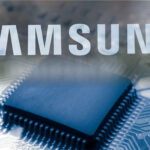
Google has unearthed the process of launching ‘Ripple Project’, an open-source application programming interface (API) that would help bring multi-functional small chips to various devices, including electric vehicles (EV).
The Alphabet Inc owned company has since 2015 publicly announced it was latching on chip-making with its tiny radar chips that has the capacity of keeping score of sleep schedules, control smartwatches, count sheets of paper, and many more features.
But the chip production process was fraught with challenges from the onset, especially in making the manufacturing a commercial success, prominent of the issues, a malfunctioning Pixel unit.
The new API launch is set to be inclined towards some of the biggest names in the automobile industry, and renowned multinational automobile manufacturer, Ford is among the known participants in the giant’s new standard.
The Ripple project which falls under the sponsorship of the Consumer Technology Association (CTA), an entity that is hosting the CES tradeshow in Las Vegas, will unlock helpful innovation that benefits everyone, with the General-purpose radar a key emerging technology for solving critical use cases in a privacy-respecting way, according to Ivan Poupyrev, the team lead Google’s ATAP skunkworks , the creator of Soli.
Intel Corp’s Mobileye, Qualcomm Inc, and Nvidia Corp, three of the leading chip manufacturers are to take over chip manufacturing for self-driving cars for the next ten years, with the announcement being made at the Las Vegas’ Consumer Electronics Show (CES). Part of function will be to establish scores of slower chips from previous generations and turning them into “powerful centralized computers.”
Manufacturing firms will have to give way to allow automakers control key parts of the technology to win the deal.
A report by Bloomberg had last year revealed that Apple will be building its electric car, marking its first presence by entering the EV league as early as 2025.
With Apple and Tesla seeming to dominate the EV market, automakers will have to up their sleeves to be able to favourably compete with them. As they are designing computers and systems with augmented self-driving abilities, they have to take out of the box measures to fulfill their mandate. The extra measures will effectively weaponize automakers with the needed tools that will expand their monetary empire from software and services embedded into the cars even after it is sold.

The Vice-President of Nvidia automotive, Danny Shapiro says automakers “that haven’t been the pioneers are finally realizing they’re going to be left in the dust if they don’t change their approach.”
Nvidia also shared a segment of its plans for the upcoming decade, with the software-defined company announcing deals to provide electric brains for several rising Chinese EV startups and other automakers, including Mercedes, Hyundai Motor Co., Volvo, and Audi.
Shapiro further stressed the vitality of lining out specific guidelines defining the control of technology and data that could lead to tensions between automakers and technology companies.
“Control and customization, and who owns the data?” he asked.
The answer to that very vital question may be difficult to come by, given it would require a significant amount of technology to build a fully autonomous car. This also implies the incorporation of computer vision algorithms that would simultaneously work with cameras to identify pedestrians, extensive full HD maps of the roads worldwide, and “drive policy” software to conduct decisions in a millisecond concerning the vehicle’s behaviour when faced with the unanticipated.
It is on the aegis of this that semiconductor manufacturers will be tasked with the ordeals of comprehensively developing the needed technology, all while considering the customers’ choice of picking and choosing.

Semiconductor Company and San-Diego based manufacturer, Qualcomm, had last year spent a whopping $4.5 billion on a Veoneer Inc purchase to be able to have all the essential pieces of software needed to complete its self-driving car chips. With the company successfully securing the investment, it also last week signed a contract with General Motors (GM).
It should be noted that with GM already having it own software assets, it will not be needing Qualcomm’s recently obtained assets.
“Our software slack is all internally developed. So, we’re not taking their pieces,” chief engineer for GM’s forthcoming “Ultra Cruise” hands-free-driving product, Jason Ditman, said in a statement.
Discover more from TechBooky
Subscribe to get the latest posts sent to your email.





